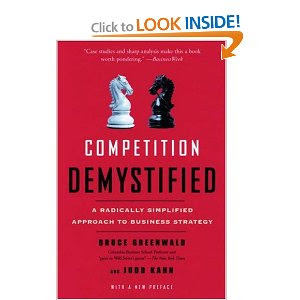The author of the excellent book for beginners, Value Investing: From Graham to Buffett…, is back, this time with a book about how to understand and analyze competitive advantages. Investors interested in better understanding what gives a company a competitive advantage must give this book a read.
The situations involving competitive advantages discussed in the book thus far have involved one dominant firm. The behaviour to be followed by such a firm is relatively straightforward, as discussed in previous chapters. But when two or more companies have similar advantages, strategic behaviour becomes more complex, as the result of strategic actions will be based on the actions of the competition.
The authors provide some tools for determining strategic actions in such cases using hypothetical scenarios involving The Home Depot and Lowe’s, two firms with advantages in home-improvement retail. One tool is inspired by the prisoner’s dilemma of game theory, and involves a two-by-two matrix which illustrates the payoffs to both The Home Depot and Lowe’s under different scenarios (of price, advertising, warranty etc. decisions). The course of events that results in equilibrium (a state in which further action by either company would hurt results, and therefore would not be undertaken), however, is not ideal for both companies as a whole (as it is too competitive).
Therefore, some structural and tactical tools are offered that can legally prevent the erosion of profits through too much competition. Structurally, the companies can try to stay out of each others’ markets (e.g. by establishing dominance in particular locales). Customer loyalty programs that reward repeat purchasing (and therefore keep customers tied to one supplier) can also help in this regard. Limits on output capacity also help, as there are no benefits to price cuts if there are no volume advantages that come with them (e.g. safety standards that restrict hours of operation).
Tactical responses involve immediate price matching (so that competitors who undercut do not benefit from volume growth). Selective price matching can actually hurt the aggressor. For example, a bank may match rates on the best customers, but leave the second tier customers to the aggressor. This results in an improved book for the defensive bank and a risky book for the aggressor. Responding with lower prices where the aggressor is strong is also a helpful defense, as the aggressor will be hurt more by price decreases where it has the largest volume of sales.




